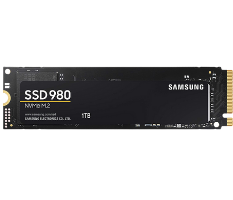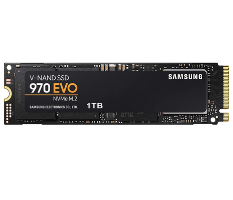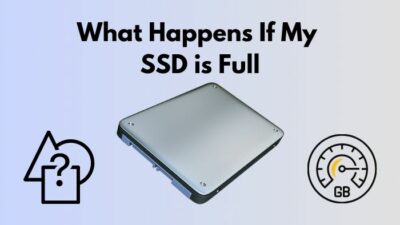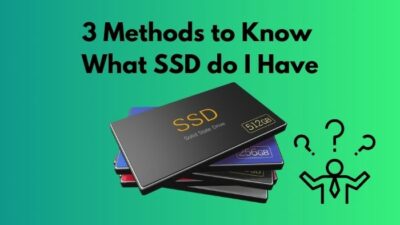Samsung 980 is one of the finest SSDs that came on the market in recent years. The value that it offers easily makes it a top choice among gaming enthusiasts.
Now, the Samsung 970 Evo is also a good SSD. But is it better than the Samsung 980?
You have to make a particular choice. Isn’t it?
Don’t worry; I got your back. After reading out this comparison guide, you’ll be able to make the final decision.
Let’s find out the option that stands out in the Samsung 980 Vs. 970 Evo showdown.
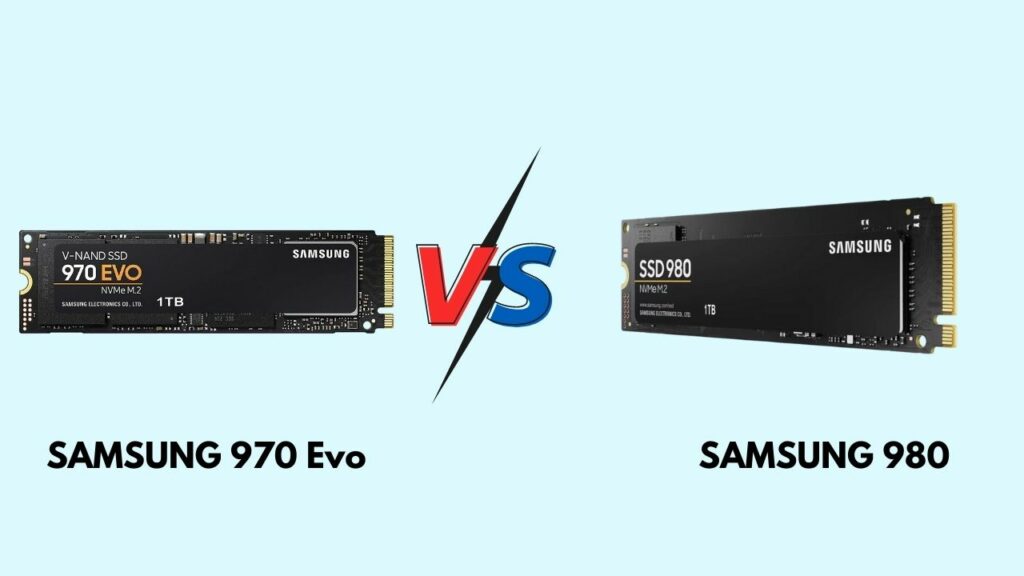
Is the Samsung 980 SSD better than Samsung 970 Evo?
This isn’t a very simple question to answer. You need to consider various factors for concluding. And that is what I am going to discuss here right now.
Here are the three differences between Samsung 980 and Samsung 970 Evo:
1. Read and Write Speeds
If you’ve got a powerful CPU with powerful components, you need to make sure that you buy storage that perfectly complements the total build.
When SSDs came into the scene for the first time, gamers blindly opted for them over the HDDs. And that is because of the increased performance level it offers to the system.
Back in the day, when SSDs were relatively new, the choice for gamers was simple. If they could afford an SSD, they simply bought it because they were way ahead of HDDs in terms of speed.
Also, Check out the battle-tested comparisons between Samsung SSD 980 Pro and Samsung 980.
Now, since there are many SSDs in the market, they look for the right option much precisely. Their process of choosing an SSD is quite an attention to detail.
That said, one of the most important factors you consider while choosing the right one between the Samsung 980 and 970 Evo is their read and write speeds.
Now, let us discuss the read/write speed of both the models, which we are comparing.
If I start with the Samsung 980, it comes with a maximum sequential write speed of 3500 MB/s and a maximum sequential read speed of 3000 MB/s. And the average read and write speed for this SSD is between 1600 MB/s and 2000 MB/s.
Coming to the Samsung 970 Evo, the max read speed is around 3400 MB/s, and the max write speed is about 2500 MB/s.
That said, the average read speed for the 970 Evo is a tad above 2300 MB/s, and the average write speed is around 2100 MB/s.
Now, if I compare the average read and write speeds of both these SSDs, it is visible that the 970 Evo has the edge over the Samsung 980. For 970 Evo, the average read speed is 45% higher, and also the write speed has a 6% increase.
You can elucidate from the higher speed of the 970 Evo that it will have much-decreased loading times than Samsung 980 during intensive gaming.
Therefore, in terms of reading and write speeds, the 970 Evo is the clear winner.
2. Presence of DRAM
SSDs can mainly be differentiated into two types based on the presence of DRAM.
Now, the question might arise, what is actually a DRAM all about?
DRAM, which is also known as Dynamic-Random Access Memory, is an integral part of many SSDs. SSDs usually store data on a type of memory cell known as the NAND flash. The data moves around these types of cells more than often during the lifespan of the SSDs.
That said, it automatically guarantees that none of the cells would be worn out due to continuous reading/writing. And that is the reason why your SSD is required to map where particular data is placed on the drive. So that when you open a program, your SSD immediately finds it.
And that map we are talking about is stored in the DRAM of your SSD.
As I said earlier, SSDs may or may not sport a DRAM. Both types come with their share of advantages.
Check out the comparison between NZXT Kraken Z63 & Corsair iCUE H115i Elite Capellix.
When it is about the SSDs with DRAMs, they come with better performance. The reason is quite simple. DRAM is faster than NAND flash memory, ensuring that your PC doesn’t need to focus wholly on the SSD for data. Instead, it can go to the DRAM and give you a much smoother and faster experience.
Whereas in the case of DRAM-less SSDs, they depend on NAND flash memory. Such dependency eventually results in slower retrieving of data. Also, the lifespan of the SSDs without DRAM is shorter than the one with DRAM.
Now, between Samsung 980 and 970 Evo, the latter one comes with a DRAM. And given what we have discussed above, the SSDs with DRAM have an upper hand over the ones without DRAM.
Therefore, it is pretty much clear that the Samsung 970 Evo is again the winner here.
Check out the comparison between 120mm and 140mm case fans.
3. Price
Generally, the SSDs that come without a DRAM are cheaper than the ones with DRAM. Here, it’s no different for the Samsung 980 and Samsung 970 Evo.
As the 970 Evo sports a DRAM, it is priced higher than the Samsung 980. However, in terms of performance, the 970 Evo is better and offers value for money.
That said, if your build comes with some limitations, it is better to go for the cheaper option. Otherwise, I would suggest you spend on the Samsung 970 Evo.
Also, check out the fastest PCIe SSD.
FAQ
Question: Why is Samsung 980 cheaper than the 970 Evo?
Answer: The Samsung 980 is cheaper than the 970 Evo because the 970 Evo sports DRAM, unlike the Samsung 980. Usually, the SSDs with DRAM boasts better performance than the DRAM-less SSDs. And that’s the main reason behind the cheaper rate of Samsung 980.
Question: Is Samsung 970 Evo worth it?
Answer: The Samsung 970 Evo is one of the fastest SSDs to be ever tested. It’s top-notch performance, along with its long-lasting ability, makes it excellent storage to consider.
Final Thoughts
Both these drives belong to the list of top-tier SSDs available in the market. Still, if I have to compare these two, there exist some discrepancies.
In this comparison guide, I tried to portray all the significant differences between these two drives.
I hope that will be enough to help you make the best option for your build. Other than this, if you feel that something is let out, then do let me know in the comments.

